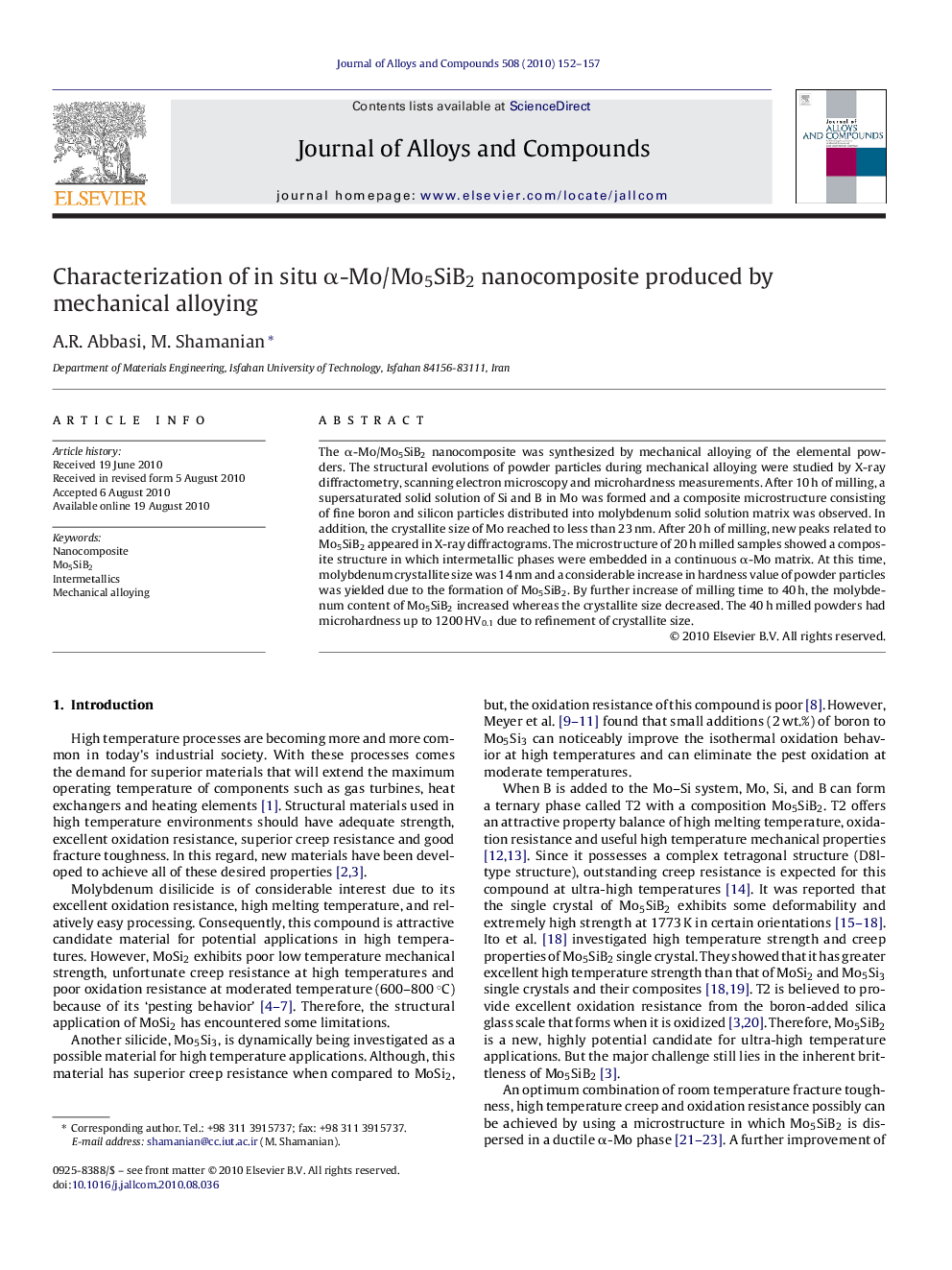| Article ID | Journal | Published Year | Pages | File Type |
|---|---|---|---|---|
| 1619836 | Journal of Alloys and Compounds | 2010 | 6 Pages |
The α-Mo/Mo5SiB2 nanocomposite was synthesized by mechanical alloying of the elemental powders. The structural evolutions of powder particles during mechanical alloying were studied by X-ray diffractometry, scanning electron microscopy and microhardness measurements. After 10 h of milling, a supersaturated solid solution of Si and B in Mo was formed and a composite microstructure consisting of fine boron and silicon particles distributed into molybdenum solid solution matrix was observed. In addition, the crystallite size of Mo reached to less than 23 nm. After 20 h of milling, new peaks related to Mo5SiB2 appeared in X-ray diffractograms. The microstructure of 20 h milled samples showed a composite structure in which intermetallic phases were embedded in a continuous α-Mo matrix. At this time, molybdenum crystallite size was 14 nm and a considerable increase in hardness value of powder particles was yielded due to the formation of Mo5SiB2. By further increase of milling time to 40 h, the molybdenum content of Mo5SiB2 increased whereas the crystallite size decreased. The 40 h milled powders had microhardness up to 1200 HV0.1 due to refinement of crystallite size.
Research highlights▶ Mechanical alloying of Mo–12.5 mol% Si–25 mol% B powders leads to the synthesis of α-Mo/Mo5SiB2 nanocomposite. The formation mechanism of this nanocomposite can be envisaged as follows. At early stages of milling, an interstitial solid solution of B in Mo is formed and further milling leads to substitutional dissolution of Si in Mo. Therefore, after 10 h of milling, a solid solution of Si and B in Mo is formed and a composite microstructure consisting of fine boron and silicon particles distributed into molybdenum solid solution matrix is observed. This fine microstructure includes an extensive interface area between Mo, Si and B phases which promotes the interdiffusion of atoms through high diffusivity paths and therefore, can decrease the activation energy of formation of Mo5SiB2 at ambient temperature. This leads to formation of α-Mo/Mo5SiB2 nanocomposite after 20 h milling time.
